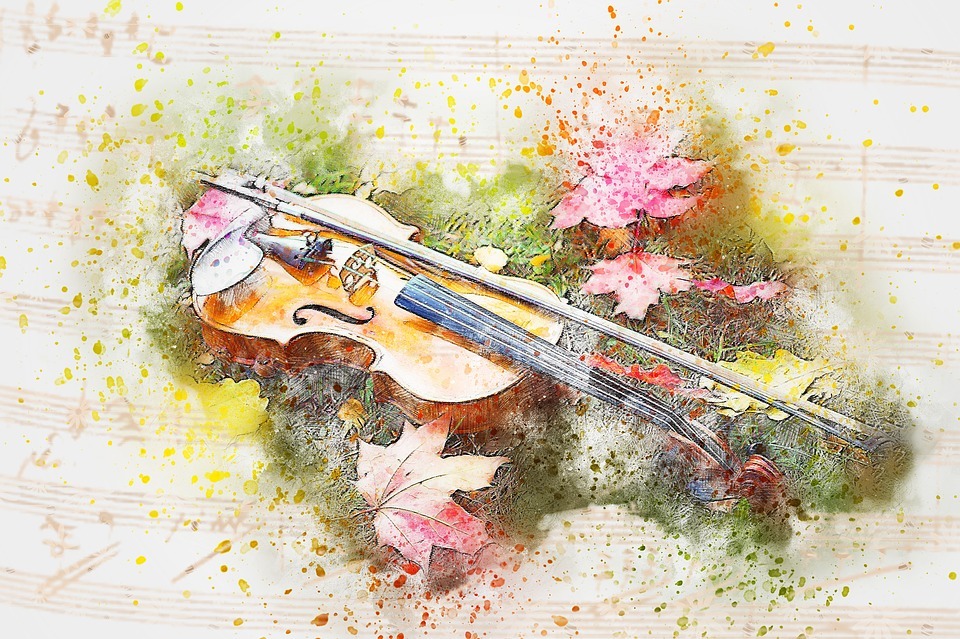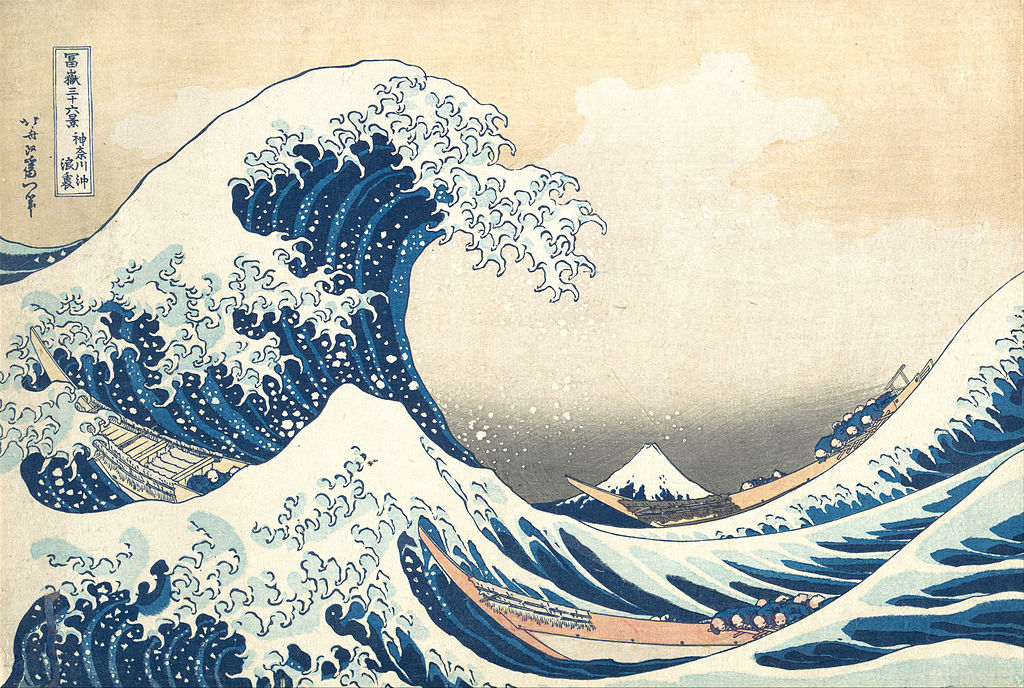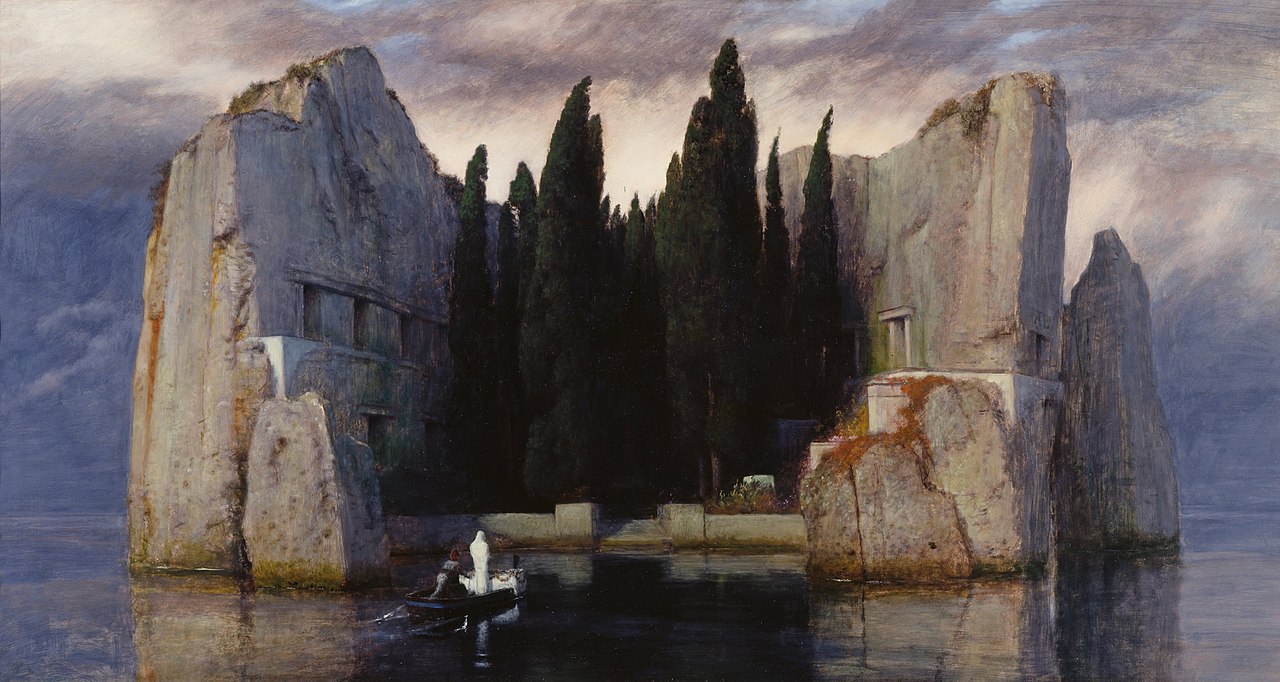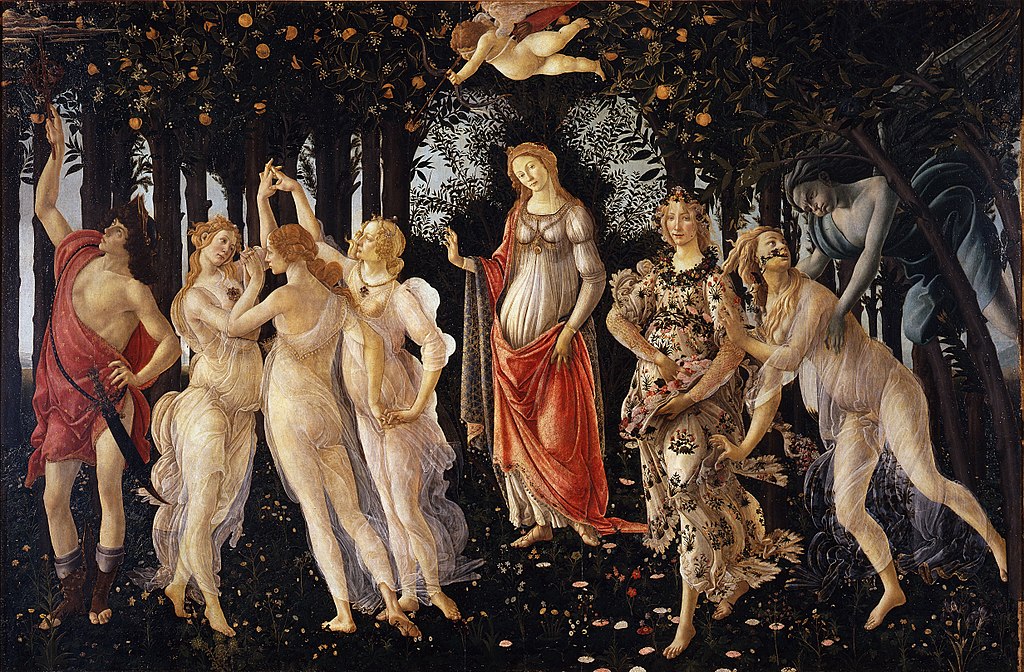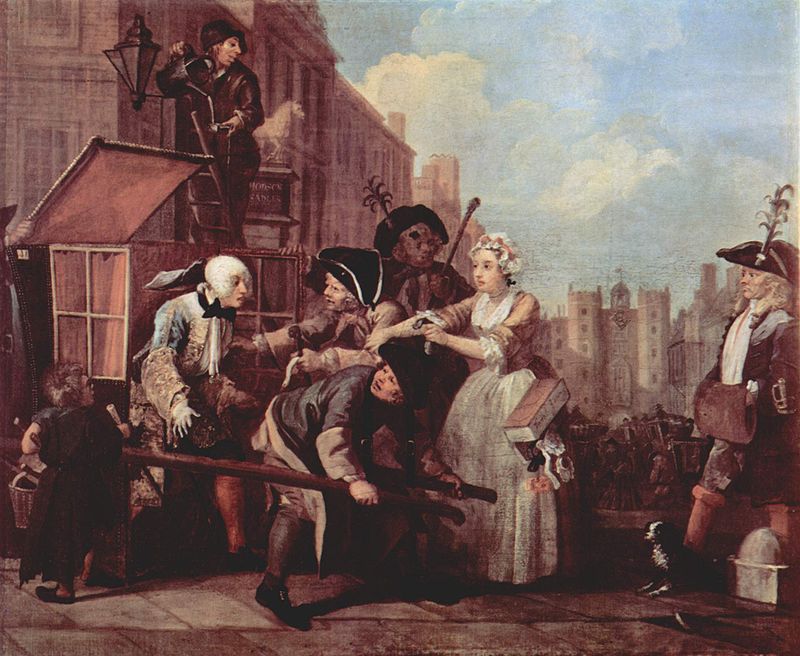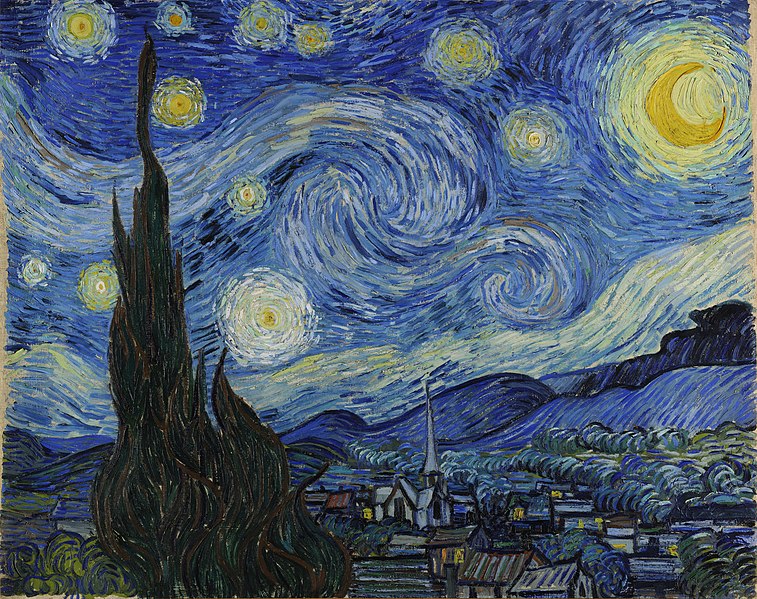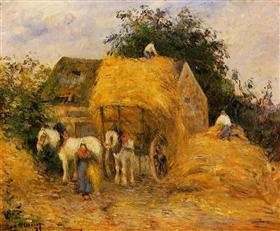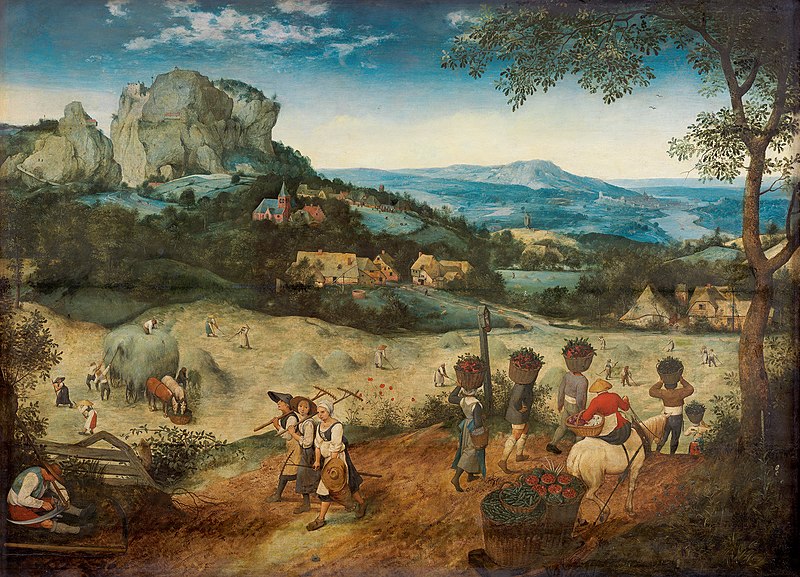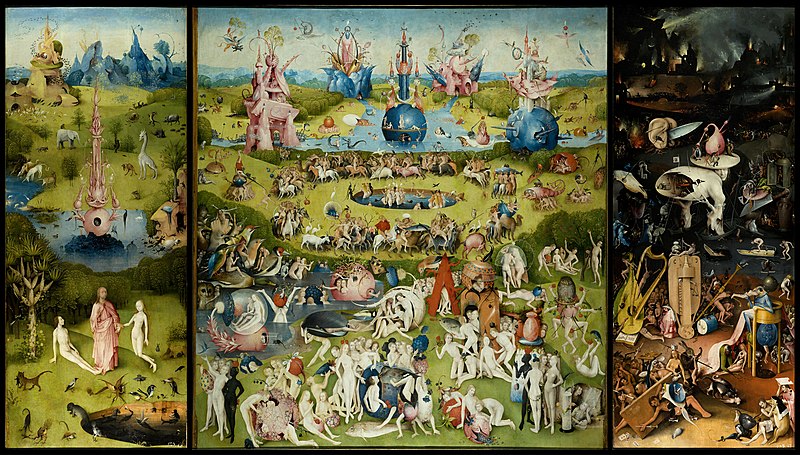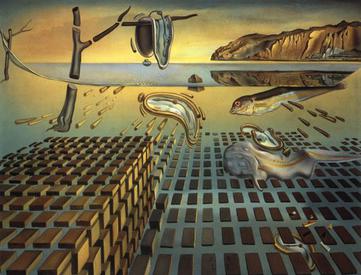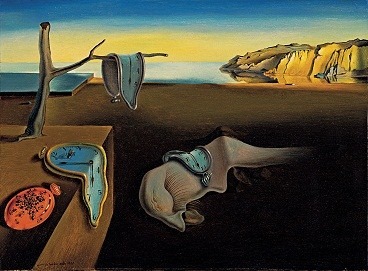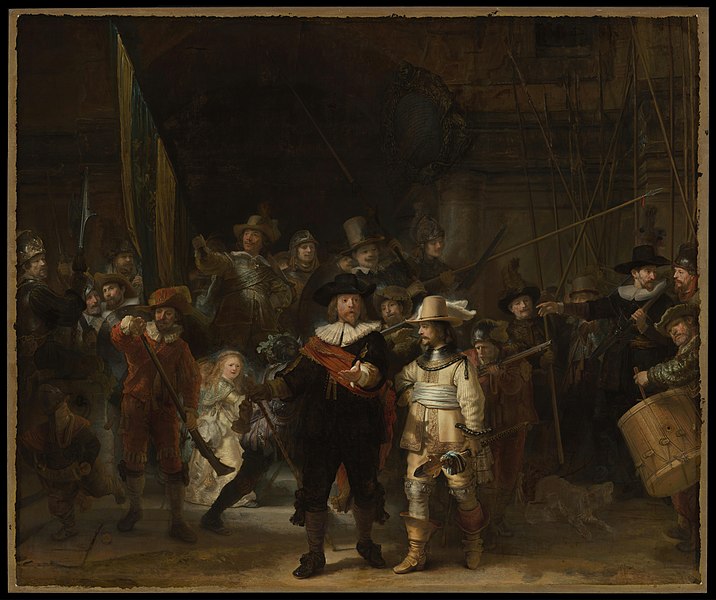Art and music have always had a harmonious relationship between them. Some of the world’s greatest artworks have been inspired by music, while some of the world’s greatest musical masterpieces have been inspired by art. Check out the following paintings that inspired classical music masterpieces:
1. “The Great Wave off Kanagawa” by Hokusai
Inspired Claude Debussy’s “La Mer”
“The Great Wave off Kanagawa” is perhaps the most iconic Japanese artwork. It is a woodblock print by Katsushika Hokusai, more popularly known as simply Hokusai. He was one of the leading names of the Japanese art genre ukiyo-e during the Edo era (from 17th to 19th century).
“The Great Wave off Kanagawa” is part of a series of paintings titled Thirty-Six Views of Mount Fuji (created around 1829 to 1832). In this particular work, the ocean waves are featured on the forefront while Mount Fuji is relegated to the background.
French composer Claude Debussy was known to incorporate Eastern influences into some of his works. “The Great Wave off Kanagawa” is said to have inspired him to compose the orchestral work La Mer (written between 1903 and 1905). Even the 1905 edition of La Mer’s score features a cover art inspired by Hokusai’s “Wave.” Listen to La Mer’s first movement below:
2. “Die Toteninsel” (“Isle of the Dead”) by Arnold Böcklin
Inspired Sergei Rachmaninoff’s “Isle of the Dead”
Arnold Böcklin was a Swiss painter and one of the leading names of the Symbolist art movement during the late 19th century. Probably his most popular work is the “Die Toteninsel” (“Isle of the Dead”).
While the image of “Die Toteninsel” you see here is the most recognizable, Böcklin actually produced five versions of this painting between 1880 from 1886. All of these five versions feature generally the same scene: a desolate rocky islet with a grove of cypress trees and a small rowboat carrying a coffin and a mourning figure clad in white.
“Die Toteninsel” has inspired several other paintings (such as a painting by Salvador Dali), literary works, plays, films, television series and episodes, and music. Perhaps the most famous work inspired by “Die Toteninsel” is Sergei Rachmaninoff’s brooding and ominous symphonic poem “Isle of the Dead.” Rachmaninoff composed the piece after he saw a black-and-white reproduction of the painting in France in 1907. When the great Russian pianist-composer-conductor later saw the original color painting, he was utterly disappointed. He remarked that if he had seen the original color of the painting, he probably wouldn’t have written the music.
Listen to “Isle of the Dead” below (with Rachmaninoff himself as the conductor)
3. Viktor Hartmann’s paintings displayed at an exhibition in Saint Petersburg in 1874
Inspired Modest Mussorgsky’s “Pictures at an Exhibition”
“Pictures at an Exhibition” is a suite of ten piano pieces (plus the recurring and varied “Promenade”) composed by Modest Mussorgsky in 1874. It is one of Mussorgsky’s famous works that demonstrates the virtuosity of the pianist. This suite was inspired by the artistic works of Viktor Hartmann, who was also Mussorgsky’s friend.
The music depicts the tour of an art exhibition, with each of the ten suites serving as a musical illustration of Hartmann’s individual artworks. These artworks were mostly drawings and watercolors that Hartmann produced during his travels abroad. Sadly, some of Hartmann’s works that inspired Mussorgsky’s music have been lost, but his other works survived, including “Ballet of the Unhatched Chicks” (pictured), “Samuel Goldenberg,” “Schmuyle,” and the “Bogatyr Gates.”
Listen to Mussorgsky’s “Pictures at an Exhibition” (with an arrangement by French composer Maurice Ravel) below:
4. “Primavera” (“Spring” or “Allegory of Spring”) by Sandro Botticelli
Inspired Ottorino Respighi’s “Trittico Botticelliano”
“Primavera” is a painting by Sandro Botticelli, an Italian Renaissance painter best known for his work “The Birth of Venus,” one of the most iconic paintings in Western art.
“Primavera” is a large panel artwork in tempera paint that Botticelli produced in the late 1470s or early 1480s. It features mythological figures such as Venus, Cupid, Flora, and Mercury. The overriding themes of this painting are marriage and fertility.
This painting inspired Italian composer Ottorino Respighi to compose “Trittico Botticelliano” (“Botticelli Tryptich”) in 1927. It is an orchestral piece in three movements, which he dedicated to American pianist Elizabeth Sprague Coolidge, who was the patron for the work. Listen to the “Botticelli Tryptich,” first movement:
5. “A Rake’s Progress” by William Hogarth
Inspired Igor Stravinsky’s “The Rake’s Progress”
“The Rake’s Progress” is an English-language opera by the Russian-born composer, pianist and conductor Igor Stravinsky. Consisting of three acts and an epilogue, the opera premiered in 1951 in Venice.
The idea for the opera’s libretto came from the eight engravings and drawings entitled “A Rake’s Progress” by 18th-century English artist William Hogarth. Stravinsky saw the artworks in a Chicago exhibition in 1947. Watch “The Rake’s Progress” below:
6. “The Starry Night” by Vincent van Gogh
Inspired “Starry Night” by composer Jennifer Higdon
The iconic painting “The Starry Night” by Vincent van Gogh shows a cypress tree and a night sky loaded with stars. Jennifer Higdon wrote “Starry Night,” a musical piece that portrays the same sense of energy and movement as the painting, because of the artwork’s intense use of color and sense of motion. Higdon was intrigued by the way that the picture used color and light to evoke a feeling of mood, and she set out to achieve the same effect in her music.
One of Higdon’s most famous works, “Starry Night,” is a classic of contemporary classical music because it interprets the image musically using avant-garde harmonies and textures. Since they both completely capture the beauty and vibrancy of the natural world, the image and the music are both considered masterpieces of their respective creative fields.
7. “The Hay Wagon” by Pieter Brueghel the Elder
Inspired “The Cowboy” by Aaron Copland
“The Hay Wagon,” one of Pieter Brueghel the Elder’s most well-known paintings, is a picture of rural life. Because of the artwork, composer Aaron Copland created the orchestral composition “The Cowboy,” which captures the spirit of the American West.
Copland took inspiration from the painting’s use of simple, strong lines and its depiction of a particular moment in time, hoping to evoke a comparable sense of timeless beauty in his music. It is said that Copland’s compositions benefited greatly from the painting’s celebration of rural life and the frontier spirit of the American West.
8. “The Hay Harvest” by Pieter Brueghel the Elder
Inspired “The Four Seasons” by Antonio Vivaldi
A bustling rural scene is depicted in Pieter Brueghel the Elder’s painting “The Hay Harvest,” which was a well-liked subject at the time. The portrayal of the varying seasons in the picture served as an inspiration for Antonio Vivaldi when he wrote “The Four Seasons,” a collection of four violin concertos, each of which represents a distinct season. Vivaldi employed musical motifs in each concerto to recreate the smells, sounds, and feelings of the corresponding season, resulting in a musical landscape reminiscent of the artwork. Both the artwork and the music are regarded as classics of their respective art forms, and both portray the cycles of life and the beauty of the changing seasons.
9. “The Garden of Earthly Delights” by Hieronymus Bosch
Inspired “Garden of Earthly Delights” by composer Philip Glass
One of Hieronymus Bosch’s most well-known and perplexing works of art from the Northern Renaissance is “The Garden of Earthly Delights.” The complex and enigmatic vision of the painting, filled with strange animals and fantastical surroundings, served as the inspiration for Philip Glass’ “Garden of Earthly Delights,” a musical adaptation of the work.
Philip Glass was moved by the painting’s unique perspective on the world, its use of vibrant colors, and its attention to even the smallest details, and he strove to translate these aspects into his music.
10. “The Sistine Chapel Ceiling” by Michelangelo
Inspired “The Creation” by Franz Joseph Haydn
Franz Joseph Haydn, a musician, was among the artists who were influenced by Michelangelo’s “Sistine Chapel Ceiling,” one of the most famous pieces of art ever created. Haydn’s “The Creation,” a notable work of classical music, reflects the majesty and grandeur of the artwork as well as the astonishment and amazement of creation because of Michelangelo’s potent representations of creation and the drama of the divine. Both the painting and the song, which are masterpieces in their own domains of art, exhibit a profound reverence for God and the natural world.
11. “Water Lilies” by Claude Monet
Inspired “La Mer” by Claude Debussy
Claude Monet painted a series of works titled “Water Lilies” that feature the well-known lily ponds in his garden in Giverny, France. Claude Debussy was inspired to produce “La Mer,” a musical piece that captures the beauty and mystique of the sea, by these paintings’ vibrant colors and impressionistic manner.
Claude Debussy tried to emulate comparable aspects of Monet’s use of color and light to portray a feeling of mood and atmosphere in his own music. One of Debussy’s finest compositions, “La Mer,” a staple of the classical canon, uses cutting-edge harmonies and textures to mimic the sound of the water.
12. “The Disintegration of the Persistence of Memory” by Salvador Dali
Inspired “Anaïs Nin” by Philip Glass
“The Disintegration of the Persistence of Memory,” one of Salvador Dali’s best-known surrealist works, served as the inspiration for Philip Glass’ ” Anaïs Nin,” a musical composition that reflects the same sense of psychological tension and surreal detachment as the artwork.
The use of fantastical images in the painting to explore mental processes served as inspiration for Philip Glass, who attempted to evoke the same sense of psychological depth in his music.
13. “The Persistence of Memory” by Salvador Dali
Inspired “Three Dali Paintings” by composer Michael Daugherty
Salvador Dali’s surrealist artwork, “The Persistence of Memory,” is regarded as one of the most well-known pieces of the 20th century. Michael Daugherty, a composer, was inspired to create “Three Dali Paintings,” a collection of musical pieces that each correlate to a distinct artwork by Dali, by the unusual imagery and investigation of time in the artwork.
The suite has musical representations of two more well-known Dali paintings in addition to a rendition of “The Persistence of Memory.” The suite is regarded as one of Daugherty’s most significant compositions and is regarded as a classic of 20th-century classical music for its use of musical motifs and structures to represent the ideas and images of the paintings.
14. “The Night Watch” by Rembrandt
Inspired “The Night Watch” by composer Paul Hindemith
The Night Watch, a well-known Rembrandt picture from the 17th century, depicts a group of city watchmen. The painting’s feeling of motion and dramatic tension inspired Paul Hindemith to compose “The Night Watch,” a musical composition with the same sense of drama and excitement.
Paul Hindemith was captivated by the way the picture used light and dark contrasts to convey a feeling of motion and tension, and he wanted to incorporate similar ideas in his music.
Conclusion
Each of these masterpieces has contributed significantly to the development of music, influencing composers, and inspiring some of the finest works of classical music ever produced.

